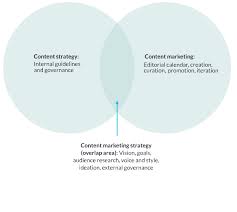Content Marketing: A Powerful Tool for Business Growth
In today’s digital age, content marketing has become one of the most effective ways to attract and retain customers. It involves creating and sharing valuable, relevant, and consistent content to engage and inform a target audience. This approach is increasingly popular among businesses of all sizes, as it offers a cost-effective way to build brand awareness, establish authority in your industry, and drive sales.
Here are some key benefits of content marketing:
Increased Brand Awareness: By consistently producing high-quality content that resonates with your target audience, you can increase your brand’s visibility online. This can help you attract new customers who may not have otherwise found you.
Improved Search Engine Rankings: Search engines like Google reward websites that produce valuable content on a regular basis by ranking them higher in search results. This means that by investing in content marketing, you can boost your website’s visibility and attract more organic traffic.
Establish Authority: By sharing informative and insightful content on topics related to your industry or niche, you can establish yourself as an authority in your field. This can help build trust with potential customers and position you as a go-to resource for information.
Increased Engagement: Content marketing allows you to connect with your audience on a deeper level by providing them with valuable information that addresses their pain points or interests. This can lead to increased engagement with your brand and ultimately drive more conversions.
So how do you get started with content marketing? Here are some tips:
Define Your Audience: Before creating any content, it’s important to understand who your target audience is and what they’re interested in. This will help ensure that the content you create is relevant and resonates with them.
Develop a Content Strategy: Once you know who your audience is, it’s time to develop a strategy for creating and sharing content that meets their needs. This may involve creating blog posts, videos, infographics, or other types of content.
Create High-Quality Content: The key to success with content marketing is creating content that is valuable, informative, and engaging. This means investing in high-quality writing, design, and production.
Promote Your Content: Once you’ve created your content, it’s important to promote it through social media, email marketing, and other channels to ensure that it reaches your target audience.
In conclusion, content marketing is a powerful tool for businesses looking to grow their online presence and attract new customers. By investing in high-quality content that resonates with your audience, you can establish yourself as an authority in your industry and drive more conversions. So why not give it a try?
8 Essential Tips for Effective Content Marketing Strategy
- Know your audience
- Create valuable content
- Optimize for SEO
- Promote on multiple channels
- Repurpose existing content
- Monitor analytics
- Engage with readers
- Test different formats
Know your audience
One of the most important tips for successful content marketing is to know your audience. Understanding who your target audience is and what they’re interested in is crucial for creating content that resonates with them and drives engagement.
Knowing your audience involves more than just their demographics. It also means understanding their pain points, interests, and motivations. This information can help you create content that addresses their needs and provides them with valuable information.
To get to know your audience, start by conducting market research. This may involve surveys, focus groups, or social media listening to gather insights into their behavior and preferences. You can also analyze website analytics to see which pages are most popular or which keywords people are using to find your site.
Once you have a better understanding of your audience, use this information to tailor your content strategy. This may involve creating blog posts, videos, or social media content that speaks directly to their interests and needs.
By knowing your audience and creating content that resonates with them, you can build a loyal following of customers who trust your brand and are more likely to convert. So take the time to get to know your audience – it’s an investment that will pay off in the long run.
Create valuable content
Creating valuable content is one of the most important tips for successful content marketing. In today’s digital age, consumers are bombarded with information from all directions, making it more challenging than ever to capture their attention. To stand out in this crowded marketplace, businesses need to create content that provides real value to their target audience.
So what does valuable content look like? It’s content that informs, educates or entertains your audience. It’s content that solves a problem or addresses a pain point. It’s content that inspires and motivates your audience to take action.
When you create valuable content, you establish yourself as an authority in your industry and build trust with your audience. This can help increase engagement with your brand and ultimately drive more conversions.
To create valuable content, start by understanding your target audience and what they’re interested in. Conduct research to find out what questions they have or what problems they’re trying to solve. Then, use this information to create content that meets their needs.
Remember, creating valuable content is not just about promoting your products or services. It’s about providing real value to your audience and building relationships with them over time.
In conclusion, creating valuable content is essential for successful content marketing. By providing real value to your audience through informative, educational or entertaining content, you can establish yourself as an authority in your industry and build trust with potential customers. So why not start creating valuable content today?
Optimize for SEO
If you’re investing time and resources into content marketing, it’s crucial to optimize your content for search engines. Search Engine Optimization (SEO) is the process of improving the quality and quantity of website traffic by increasing the visibility of a website or a web page in search engine results pages (SERPs).
By optimizing your content for SEO, you can increase your website’s visibility in search results, attract more organic traffic, and ultimately drive more conversions. Here are some tips to help you optimize your content for SEO:
Keyword Research: Before creating any content, it’s important to conduct keyword research to identify the keywords and phrases that your target audience is searching for. This will help ensure that your content is relevant and optimized for the right keywords.
Optimize Your Headlines: Your headlines should be concise, descriptive, and include relevant keywords. This will help both readers and search engines understand what your content is about.
Use Meta Descriptions: A meta description is a brief summary of your content that appears below the headline in search results. It should include relevant keywords and provide a compelling reason for users to click through to your website.
Include Internal Links: Internal links are links within your website that connect one page to another. They help users navigate your site and also signal to search engines which pages are most important.
Use Alt Text on Images: Alt text is a description of an image that appears when the image cannot be displayed. Including relevant keywords in alt text can help improve the visibility of your images in search results.
In conclusion, optimizing your content for SEO is an essential part of any successful content marketing strategy. By conducting keyword research, optimizing headlines and meta descriptions, including internal links, and using alt text on images, you can improve the visibility of your website in search results and attract more organic traffic. So, make sure to optimize your content for SEO and watch your website’s traffic and conversions grow.
Promote on multiple channels
Promote on Multiple Channels: A Key Strategy for Successful Content Marketing
Creating high-quality content is just the first step in a successful content marketing strategy. To truly maximize the impact of your content, it’s important to promote it on multiple channels. This means sharing your content through social media, email marketing, paid advertising, and other channels to ensure that it reaches your target audience.
Here are some key reasons why promoting on multiple channels is so important:
Reach a Wider Audience: By promoting your content on multiple channels, you can reach a wider audience than if you were to rely solely on one channel. This can help you attract new customers who may not have otherwise found you.
Maximize Engagement: Different people prefer different types of content and consume it through different channels. By promoting your content across multiple channels, you can maximize engagement with your target audience by meeting them where they are.
Drive Conversions: The ultimate goal of any content marketing strategy is to drive conversions. By promoting your content across multiple channels, you increase the chances that someone will see it and take action, whether that’s making a purchase or signing up for your newsletter.
So how do you promote your content on multiple channels? Here are some tips:
Share on Social Media: Social media platforms like Facebook, Twitter, and LinkedIn are great places to share your content with a wider audience. Be sure to tailor your messages for each platform to maximize engagement.
Use Email Marketing: Email marketing is another effective way to promote your content. Send out newsletters or targeted emails featuring links to relevant blog posts or other pieces of content.
Invest in Paid Advertising: Paid advertising can help amplify the reach of your content by targeting specific audiences based on demographics or interests.
In conclusion, promoting your content on multiple channels is a key strategy for successful content marketing. By reaching a wider audience, maximizing engagement, and driving conversions, you can ensure that your content has the greatest impact possible. So be sure to invest in promoting your content across multiple channels to get the most out of your content marketing efforts.
Repurpose existing content
Repurposing existing content is a smart and effective way to maximize the value of your content marketing efforts. Instead of constantly creating new content from scratch, repurposing allows you to take existing content and transform it into different formats or for different platforms, reaching a wider audience and increasing your ROI.
Here are some ways that you can repurpose your existing content:
Create Blog Posts: If you have a long-form piece of content such as an eBook or white paper, consider breaking it down into smaller blog posts. This not only allows you to reach a wider audience but also gives you the opportunity to dive deeper into specific topics.
Transform Content into Infographics: If you have data-heavy content such as research reports or case studies, consider transforming them into visually appealing infographics. This can help make complex information more digestible and shareable on social media.
Turn Webinars into Video Series: If you’ve hosted webinars in the past, consider turning them into a video series that can be shared on YouTube or other video platforms. This allows your audience to consume the content at their own pace and provides an additional touchpoint for engagement.
Create Social Media Posts: Take key insights from your existing content and turn them into bite-sized social media posts that can be shared across different platforms. This helps keep your brand top-of-mind while providing valuable information to your followers.
In conclusion, repurposing existing content is an efficient way to increase the reach of your content marketing efforts while maintaining quality. By taking advantage of different formats and platforms, you can engage with your audience in new ways and drive more traffic and conversions. So next time you’re struggling with what type of content to create, consider repurposing something that’s already in your arsenal!
Monitor analytics
One important tip for successful content marketing is to monitor analytics regularly. Analytics provide valuable insights into how your content is performing and can help you make informed decisions about future content strategies.
By monitoring analytics, you can track metrics such as website traffic, engagement rates, and conversion rates. This information can help you identify which types of content are resonating with your audience and which ones may need to be adjusted or eliminated.
For example, if you notice that a particular blog post is generating a lot of traffic and engagement, you may want to create more content on that topic or explore related topics. On the other hand, if a piece of content is not performing well, you may want to re-evaluate the topic or adjust the format to better meet your audience’s needs.
In addition to tracking metrics on individual pieces of content, it’s also important to monitor overall trends over time. By looking at trends in website traffic or engagement rates over weeks or months, you can identify patterns and make adjustments accordingly.
Overall, monitoring analytics is an essential part of any successful content marketing strategy. By using data to inform your decisions and constantly refining your approach based on what works best for your audience, you can achieve long-term success and drive business growth.
Engage with readers
Engaging with readers is a crucial aspect of content marketing. When you create content, your ultimate goal is to connect with your target audience and provide them with value. However, it’s not enough to simply publish your content and hope for the best. You need to actively engage with your readers to build relationships and encourage them to take action.
Here are some tips for engaging with readers:
Respond to Comments: When readers leave comments on your blog or social media posts, make sure to respond in a timely and thoughtful manner. This shows that you value their input and are interested in what they have to say.
Encourage Feedback: Ask your readers for feedback on your content or products/services. This can help you improve your offerings and build stronger relationships with your audience.
Create Interactive Content: Consider creating interactive content such as quizzes or polls that encourage reader participation. This can help boost engagement and keep readers coming back for more.
Ask Questions: Use social media or email marketing to ask your audience questions related to their interests or pain points. This can help you tailor your content to their needs and better serve them.
By engaging with readers, you can build a loyal following that will be more likely to share your content and recommend you to others. So don’t be afraid to reach out and start building those relationships today!
Test different formats
When it comes to content marketing, one of the most important tips to keep in mind is to test different formats. This means experimenting with different types of content, such as blog posts, videos, infographics, podcasts, and more.
Why is testing different formats so important? For starters, not all audiences consume content in the same way. Some people prefer to read blog posts or articles, while others prefer visual content like videos or infographics. By testing different formats and analyzing the results, you can gain valuable insights into what types of content resonate with your audience.
In addition, testing different formats can help you stand out from the competition. If everyone in your industry is creating blog posts, for example, you may be able to differentiate yourself by creating videos or podcasts instead.
Finally, testing different formats can help you identify new opportunities for growth. For example, if you find that your audience responds well to video content but you haven’t been creating many videos up until now, this could be an area where you can focus more of your efforts in the future.
So if you’re looking to take your content marketing efforts to the next level, don’t be afraid to experiment with different formats. You never know what might work best for your audience until you try!




